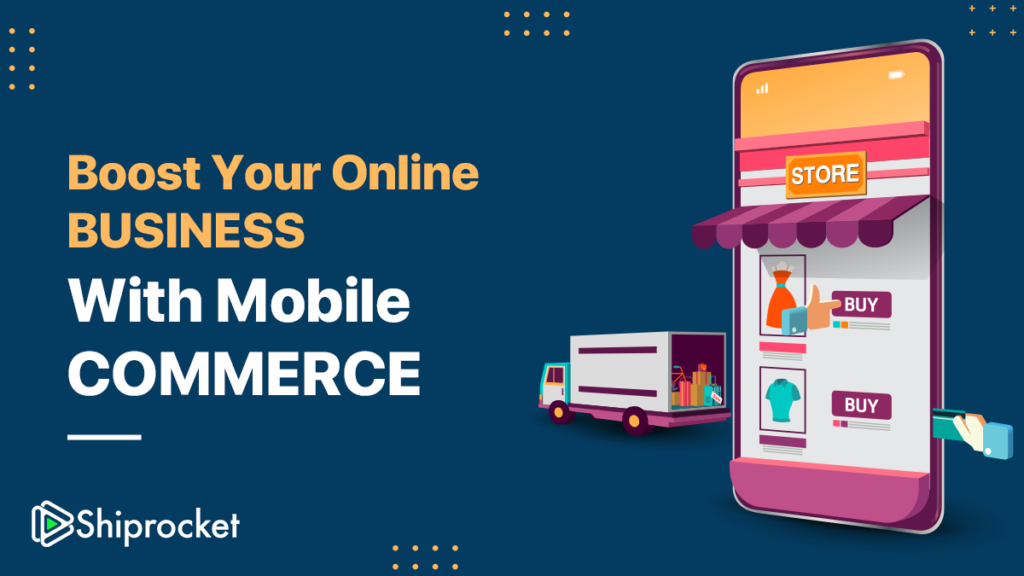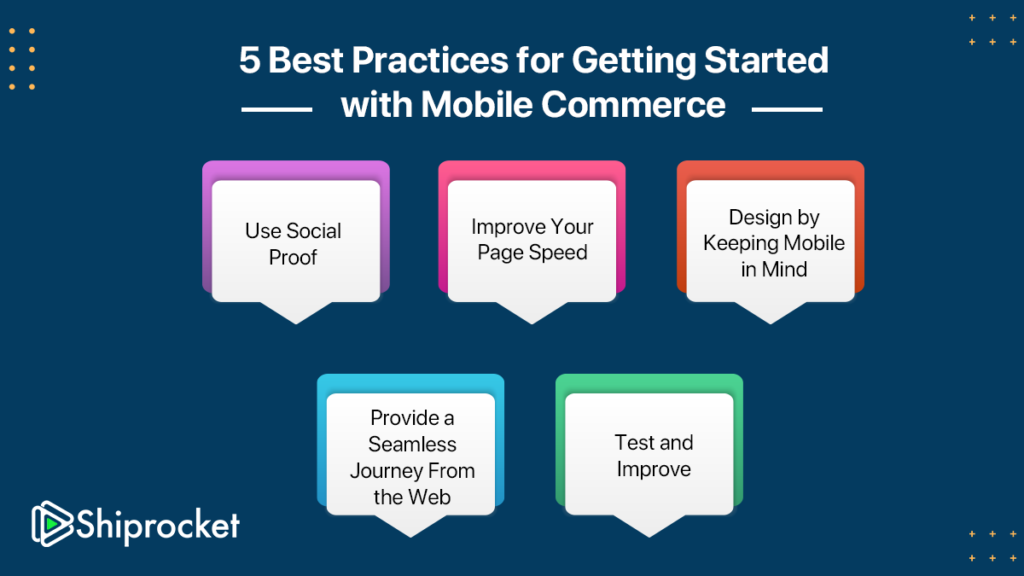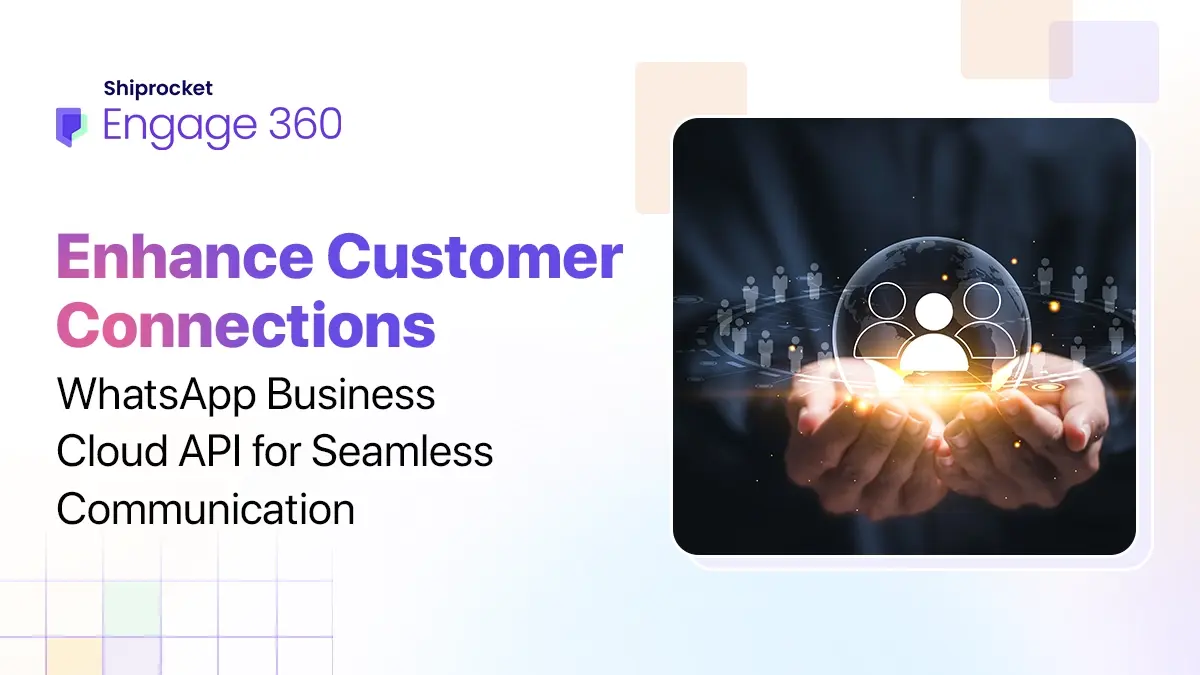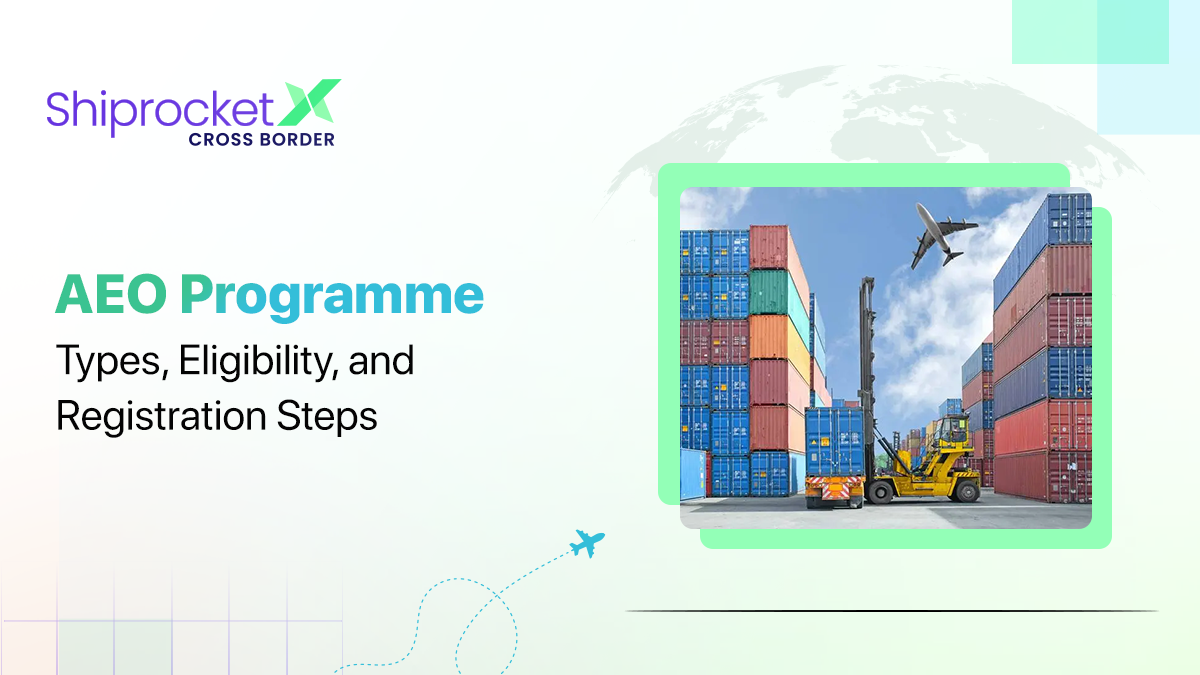Mobile Commerce: Types, Best Practices & Advantages
- What is Mobile Commerce?
- How is Mobile Commerce different from eCommerce?
- What are the Different Types of Mobile Commerce?
- How is Mobile Commerce Performance Measured?
- 5 Best Practices for Getting Started with Mobile Commerce
- Sail with the Wave of Mobile Commerce!
- What Does the Future Hold for Mobile Commerce?
- Advantages of Mobile Commerce
- Coclusion
Statistics suggest that mobile commerce sales is projected at $3.44 trillion in 2027 – approximately 79% more than 2020 [Oberlo.com]. As this number grows, it brings about more than a few opportunities for the eCommerce business. Many assume that it is just a trend that a large number of people are shopping on their mobile phones, which will eventually pass as a fad. However, those who understand it is a progression or evolution of eCommerce capitalize on it in the best possible manner.

The customers’ shopping pattern is changing rapidly, and we’ve all seen it from brick-and-mortar stores to websites, applications, and now mobile phones. Research indicated that by the year 2023, mobile eCommerce sales are expected to account for almost 60% of eCommerce purchases. As mobile seems to grow as the customer’s preferred shopping device, the world is welcoming the age of mobile commerce.
In other words, if you can go to a store physically, browse a website on the web, why can’t you shop on your mobile phone. While it seems intuitive to many, a lot of businesses are failing to anticipate its impending impact. If you’re not providing a platform where the customers can shop on their mobile phones, you’re missing many sales without even realizing it. Moreover, mobile phones have already become an integral part of our lives and even started to influence the customers’ purchase decisions.
To get ahead in the ever-competitive race and make the most of those sales you’re missing, you must venture into the world of mobile commerce. But before that, make sure you’re prepared with the nuances of the buzzword. Don’t worry; we’ve got all covered for you. Let’s take a look at mobile commerce and the ways you can get started with it –
What is Mobile Commerce?
As mobile phones become an inseparable part of our lives, customers are using them for all sorts of reasons with their use only increasing with each passing day. Be it streaming movies, attending calls, sending emails and messages, or performing payments. The device’s convenience makes it more and more attractive to people who hitherto went to their laptops or personal computers to look up something.
The ease of payments is pushing people to make purchases on mobile phones. This is where mobile commerce kicks in. Also known as mCommerce, it is the process of making a monetary transaction using a mobile phone. Mobile commerce is not just serving as a beneficiary to eCommerce but has paved the way for many new industries. Be it mobile banking, hotel bookings and reservations, digital content purchase and delivery, mobile marketing, push apps, etc., are all a result of mobile commerce.
Put differently, mobile commerce encompasses a wide variety of transactions and therefore forms different types. Right from shopping to banking to payments, mCommerce covers it all.
How is Mobile Commerce different from eCommerce?
eCommerce involves selling and purchasing goods and services online. This can include transacting through different electronic devices including laptops, desktops, tablets, and mobile equipped with an internet connection.
Mobile commerce, on the other hand, is carried out exclusively through a smartphone equipped with an internet connection.
What are the Different Types of Mobile Commerce?
mCommerce is categorised into the following types:
Mobile Banking – This gives access to bank accounts and enables users to pay their bills, conduct stock trading, review loan status, and make other financial transactions. Banks have exclusive applications through which their customers can carry out these transactions. They facilitate secure transactions.
Mobile Shopping – One of the most common examples of mCommerce is mobile shopping. Customers browse through and purchase different products from mobile or web applications such as Flipkart, Amazon, and others.
Mobile Payment – This shuns the need to carry cash and cards around. You can easily make the payment using mobile payment apps such as Paytm, Google Pay, and PayPal among others. QR codes are also used to make mobile payments.
How is Mobile Commerce Performance Measured?
Mobile commerce performance is measured by assessing performance indicators such as total mobile and application traffic, average order value and the value of orders received over the period. Mobile cart conversion rate and SMS subscriptions are also taken into account to gauge the performance.
5 Best Practices for Getting Started with Mobile Commerce

Use Social Proof
Be it mobile or web, payment security is a fundamental reason customers leave their carts behind. Abandoned carts are disappointments and a loss of sale opportunity for your business. This is especially when you’ve established yourself on a new platform. As you enter the world of mobile commerce, the chances are that customers will have a lot of hesitation in moving forward with a purchase. That’s why we have social proof to the rescue. No matter how well established you are as a business, and social proof can help you come across as a reliable brand to our customers. Build trust early during the customers’ shopping experience by injecting social proof into your mobile platform.
Improve Your Page Speed
Slo-mo is only useful as an Instagram experience and doesn’t have to breathe life anywhere in the world of eCommerce. Make sure your mobile pages open spot on without any delays. Delays in opening pages can leave a bad impact on your customers. A lot of customers would prefer to move to another website because yours take too much time to upload. Especially, if you want to boost engagement on your mobile platform, make sure that your pages open fast enough. Statistics suggest that as the page load time increases from 1 to 3 seconds, the bounce rate becomes 32 percent. Similarly, for a page load time of 6 seconds, the bounce rate is as high as 106 percent.
Design by Keeping Mobile in Mind
Make a ‘mobile-first’ approach your motto if you want to succeed in the field of mCommerce. Even though you’re creating an eCommerce website from scratch or modifying an existing one, mobile has to be on your mind. Many factors can’t be neglected, from making its responsive design to choosing the right colors that come across as useful even on dim-lit mobile screens. Since most customers are using their mobile phones to look up something on a search engine, Google tends to rank those websites higher that are optimized for a mobile phone.
Provide a Seamless Journey From the Web
While some of our customers might be new, your loyal fanbase must be using your mobile website or app for the first time. Remember to create your mobile design aligned to your web or an already established platform. For example, use the same color and position your logo in the same place as you do on other media. Similarly, provide the same kind of options and product categories. The best thing you can do is link your customers’ purchases and profiles across all platforms to establish a unified experience. Regardless of the device they use, they must find their wishlist and order history across all platforms.
Test and Improve
No matter what kind of changes you make to your existing website, be sure to test it. Watch how these changes unfold and monitor your customers’ responses based on them. An A/B test of your new mCommerce platform can help you decide which design or features are working better. Take a cue from the insights and improve.
Sail with the Wave of Mobile Commerce!
As mCommerce grows across the world, the profit-generating opportunities with it are also on the rise. Businesses that can capitalize on it can establish themselves as reliable in their customers’ eyes. The key is to get started, test, and improve on the feedback. But, don’t forget to pay attention to the order fulfillment process that forms the pillars of your business. Use a 3PL like Shiprocket for growing your mCommerce by 4X and win your customers’ hearts without worrying about a tight budget.
What Does the Future Hold for Mobile Commerce?
The popularity of mCommerce is growing as the concept is evolving and reaching larger groups. More and more businesses are offering mobile commerce facilities to cater to a wider audience and boost their sales. Statistics reveal that mCommerce is likely to account for 10.4% of the total retail sales by 2025. Some of the ongoing and future mobile commerce trends are as follows:
- Responsive Websites – Brands are investing in responsive websites that can be accessed seamlessly across devices. These websites adapt to the size of the device enabling the users to browse, shop, and carry out other transactions with ease. The trend will continue to grow further as it reduces the bounce rate and enhances user experience.
- Mobile Retargeting – It involves showing ads only to your target audience rather than displaying them all over the internet. This may involve showing ads to those who showed interest in your brand by visiting your website or application. This approach brings in better returns and is thus likely to be adopted by a greater number of businesses in the times to come.
- The Use of Augmented Reality – Some businesses have started making use of augmented reality to enhance customer experience as they shop from their online store. This enables shoppers to use AR models of the products on sale and test them to assess whether they match their needs or not.
- Chatbots and Shopping Assistants – Chatbots and shopping assistants are making online shopping easier by providing product recommendations and guiding through tasks leading to purchase completion. The adoption of these tools is expected to increase in the coming times. A recent survey indicates that by 2030, the global AI chatbot market is likely to go up to $3.99 billion.
Advantages of Mobile Commerce
Here is a look at the various advantages of mCommerce:
- Wider Reach
Mobile commerce enables customers to widen their reach and cater to a larger customer base. This is because of the ease of access it offers to the customers. Besides, businesses get detailed insight into the customer’s buying behaviour and preferences. They can create personalised offers and give discounts to target shoppers by using this data.
- Comparing Rates is Easier
Customers can browse through a wide variety of products under different categories as they use mCommerce. It enables them to read brand reviews, compare prices, and make buying decisions accordingly.
- Omnichannel Experience
It enables customers to make purchases easily using their preferred channel as it creates an omnichannel experience. Products can be sold on different channels including eCommerce websites, applications and social media platforms.
Coclusion
Mobile commerce is growing fast, and businesses that adapt can reach more customers and boost sales. By creating a smooth shopping experience and using smart tools like Shiprocket for easy order fulfilment, you can stay ahead of the competition.
Start today and make mobile shopping a success for your business!







